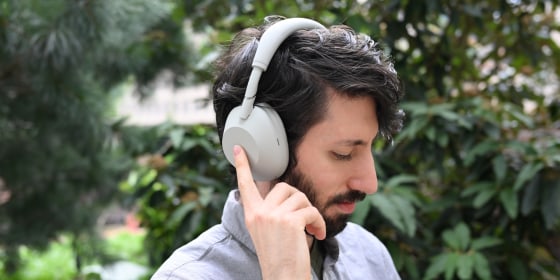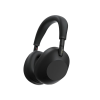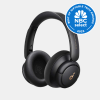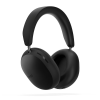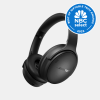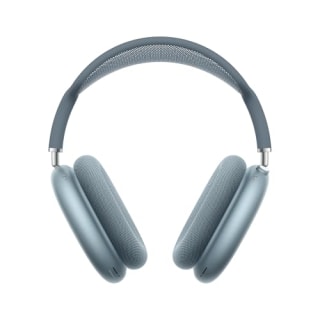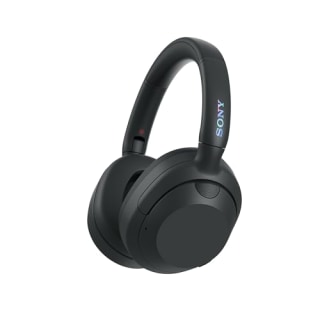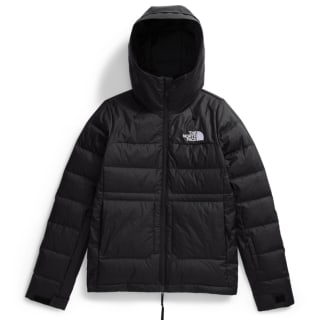Almost everyone I see on my morning commute is wearing earbuds (mostly AirPods). But when I want to watch a show on my tablet or pack a weekend bag, I usually reach for a pair of over-ear headphones. That’s because they have superior sound quality, long battery life and strong automated noise cancellation.
I’ve tested dozens of headphones, including wireless earbuds, workout headphones and open ear headphones. I combined my experience with the rest of the NBC Select team to pick the best over-ear headphones for you.
How I picked the best over-ear headphones
Almost everyone at NBC Select has a pair of over-ear headphones they love. Combining their feedback and my time testing dozens of headphones, I selected our favorites by keeping the following qualities in mind:
- Comfort: I highlighted headphones that are comfortable to wear for hours at a time, with an adjustable fit, cushioned earpads, a comfortable headband and even weight distribution across your head.
- Ease of use: I picked headphones that were easy to control using the buttons or touch options on the earcups. I also tried each brand’s smartphone app, looking into extra features and useful settings.
- Battery life: A good pair of headphones should keep you entertained through your commute, international flight or weekend trip, without having to worry about recharging. Most of my picks have at least 24 hours of battery life.
- Noise-canceling: All of our top picks have active noise cancellation (ANC). This technology detects incoming noise and cancels it out — a must-have for hearing your music clearly in a noisy environment, without having to crank up the volume.
The best over-ear headphones in 2026
Most of our top picks come from well-known audio brands like Sony and Bose. All of our picks have ANC, transparency and some kind of travel case included. With the exception of the Apple AirPods Max, all of our top picks work equally well on all kinds of devices —- Android phones, Apple laptops, Samsung tablets, you name it.
Best overall
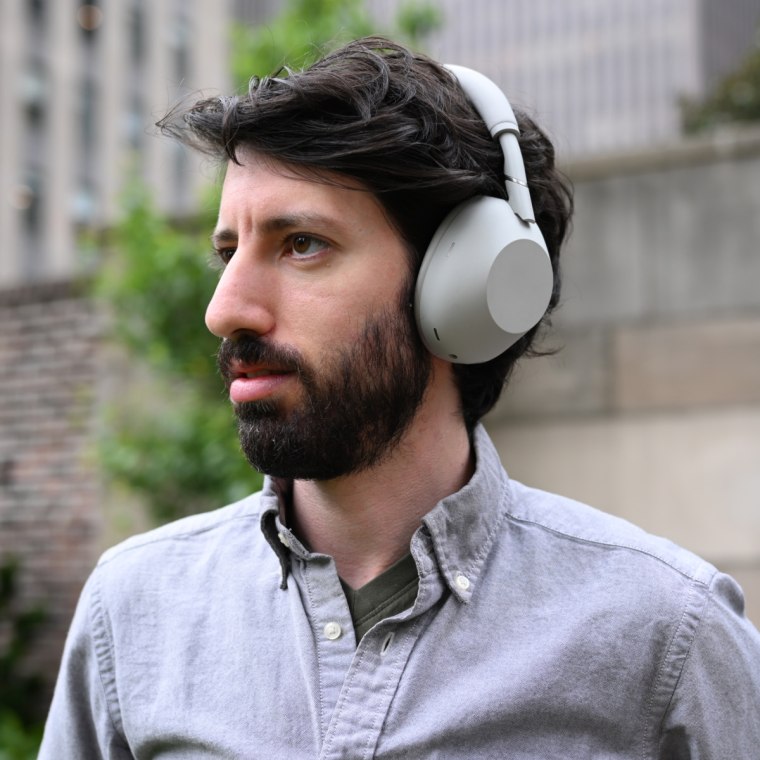
NBC Select commerce editor Jordan Bowman and I are huge fans of the WH-1000XM series (aside from the clunky name). They are good at just about everything, with great sound quality, powerful active noise cancellation, intuitive touch controls and excellent battery life. We’ve used the XM4, XM5 and now these latest XM6’s for work, commuting, vacations and relaxing at home without issue.
The XM6 has a slightly bass-forward sound profile, but not so heavy that it drowns out mid or high end instrumentation. They convey rumbling guitar and sweeping vocals with proper gravitas. Detailed jazz arrangements also come in with layered detail and energy. They are also more comfortable than the previous XM5, with a wider headband that is easier to adjust.
I typically have complaints about touch-controlled headsets, but Sony is one brand that nails it. The right earcup is essentially a touchpad — you can pause and play, adjust volume, skip and repeat tracks and more, all with swipes and taps. If you cover the entire right earcup with your palm, the headphones instantly switch to hear-through mode, a quick way to hear someone talking to you without taking off the headset. The two physical buttons on the left earcup act as the power button and mode switch.
Unlike the XM5, the XM6 fold down to a smaller size, meaning the included hard case is easier to put in most bags. The XM6 is pricey, though — if you are looking for something similar from the brand, consider the Sony WH-1000XM4.
Best budget
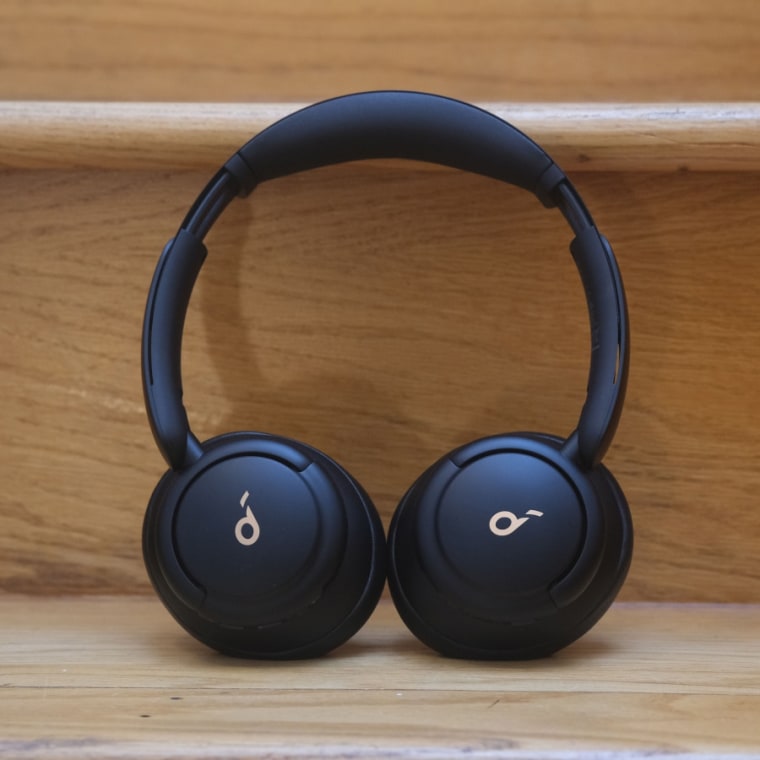
You don’t have to spend hundreds of dollars to get a pair of full-featured over-ear headphones. The Soundcore Life Q30 costs under $100 but has most of the same features as our other picks, (ANC, transparency mode, a folding design, a hard case, long battery life and fast charging).
They are comfortable, if a bit flimsy, especially in the control buttons. The sound isolation is decent, with ANC adding a little extra noise-canceling to the mix. Transparency mode is a little lacking, common in this sub-$100 price range. But the battery life is stellar with 60 hours of power with ANC turned off and 40 hours with ANC turned on.
These headphones lack some of the detail and clarity of higher priced options, especially for instrumental and orchestral music. If you are willing to spend over $100, the Soundcore Space Q45 is a higher-tier model that improves on nearly every aspect of the Q30s, in my experience.
Best for noise-canceling
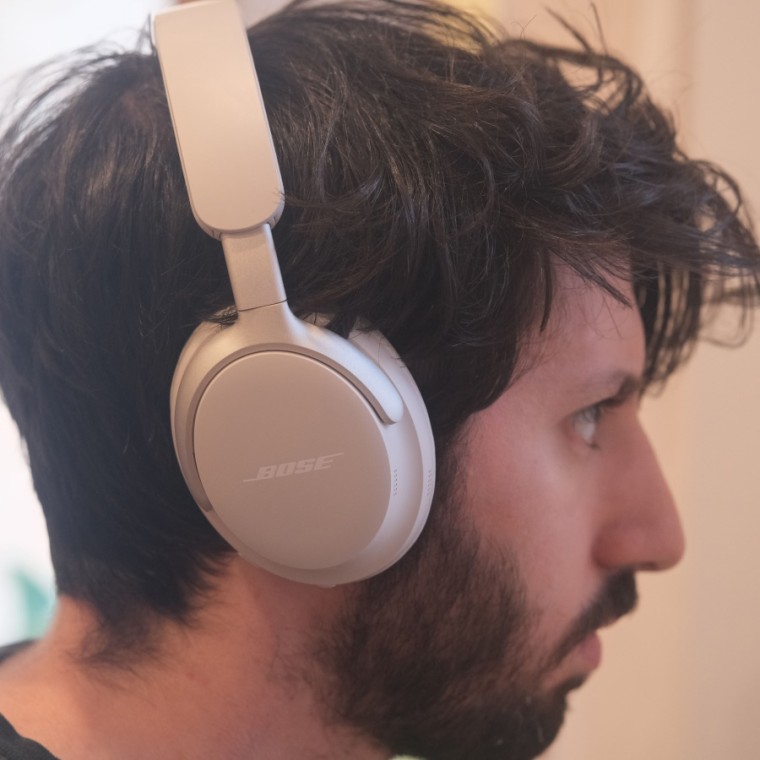
If you want to hear your music and nothing else, these headphones have some of the strongest noise-canceling I’ve heard (alongside the Sony WH-1000XM6). I gravitate towards this headset when I want to focus in the office — chatter around my desk becomes barely audible, even with the volume level low. The sound profile also sounds more neutral when compared to the Sony WH-1000XM6.
They are well-built and very adjustable, with metal along the hinges and plush padding around the earcups and headband. They fold down into the included hard case and show no signs of wear and tear even after a few months of consistent use.
The headphones have a mix of physical and touch controls on the earcups — both could use some improvement, considering the price point. The volume slider is easy to accidentally adjust when putting on or taking off the headphones, says Bowman. The on-off button also has a bit of a delay — it can take a few seconds to know if you’ve turned the headset on or off.
Best for Apple
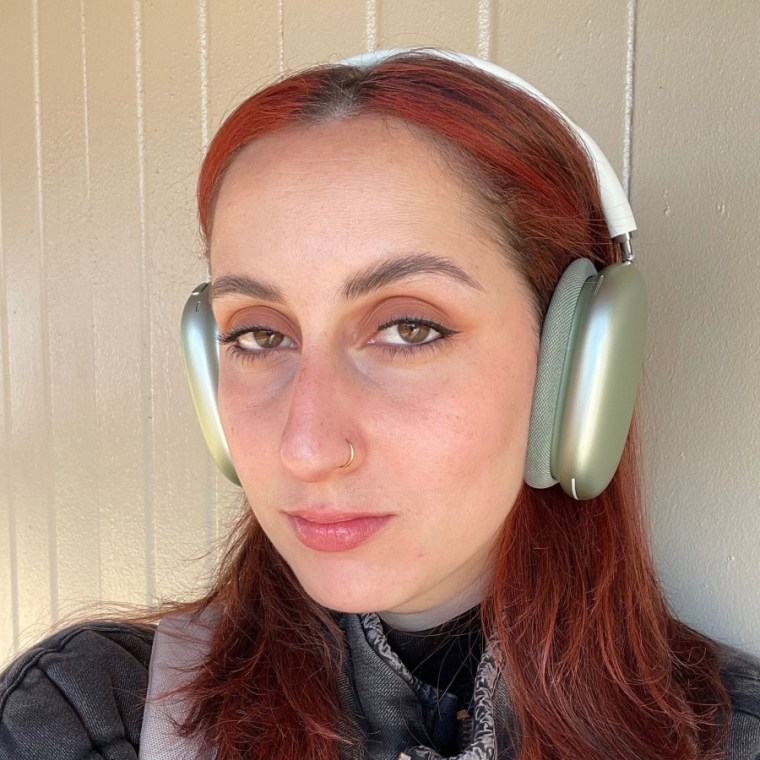
NBC Select editorial projects manager Rebecca Rodriguez has had AirPods Max for about two years. She uses them for everything: working out, commuting, travel, focusing in the office and anything in between. They are the best headphones she’s ever had, but work best with Apple devices — many of their connectivity features do not function on Windows and Android.
These headphones are comfortable and have ample padding without too much clamping force against your head, says Rodriguez. The earcups attach magnetically to the headset, and are far easier to remove and clean than our other top picks. The headset is also much heavier than our other top picks, and although Rodriguez noticed, she never found them uncomfortable to wear.
They have excellent ANC and one of the best transparency modes on the market, in our experience. In transparency, noise and conversations come in clearly, making it easier to leave the headset on for hours at a time.
For travel, the largely metal build is durable, but the included soft case is lacking, in our experience. It only protects the earcups, and leaves the metal and mesh headband completely exposed.
Best design:
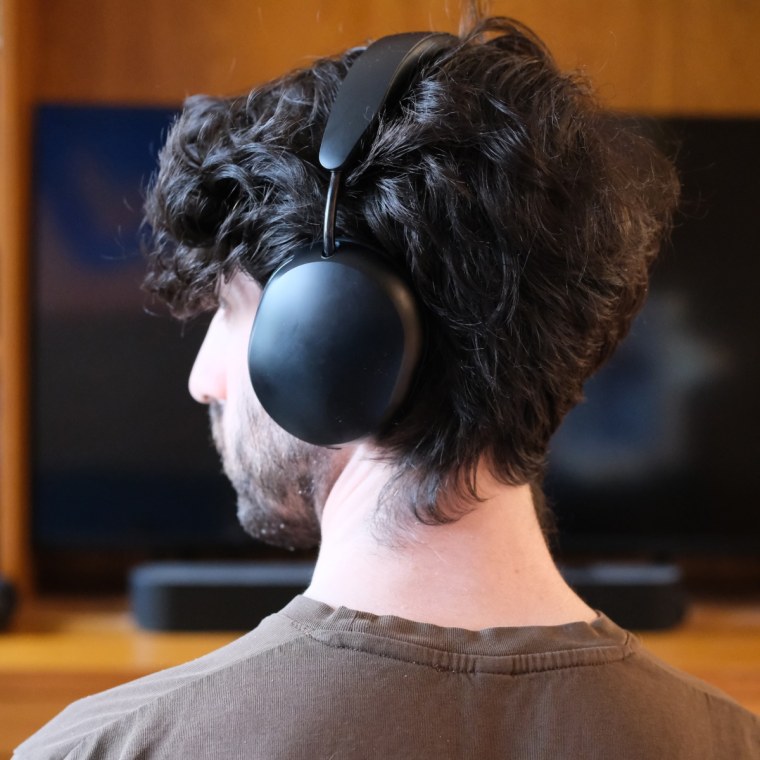
These noise-canceling headphones from Sonos (the first from the brand) have the best on-ear controls of any pair I’ve tried. There are dedicated buttons for power and ANC, then a sliding media button for everything else (called the content key). You can slide the content key up and down for volume adjustment or press it in to pause, play, skip and repeat songs or even take calls. It is responsive, precise and less likely to make an error compared to the more temperamental touch controls I’ve tried.
The Sonos Ace has a neutral-feeling sound profile that produces crisp, clear and balanced audio. Like the WH-1000XM6s and AirPods Max, they deliver detailed sound across all genres I listen to. They create a very solid seal around my ears — so much so that I typically leave ANC off when I am in a quiet environment because they cancel out a lot of noise naturally. They are also incredibly comfortable with top notch padding in the ear cup and head pad — I’ve worn them for over four hours at a time, and never felt the need to take them off.
The headphones connect over Bluetooth, but you can also use them wired with the included USB-C or 3.5mm cables. If you have a Sonos soundbar, you can transfer audio from the soundbar to the headphones instantly by holding the content key. I don’t typically listen to TV with headphones, but this was a nifty feature to have on top of an already good pair of headphones.
The headphones do not fold, but are very slim — the carrying case is also easy to slide into a backpack or tote bag.
Best for bass-lovers
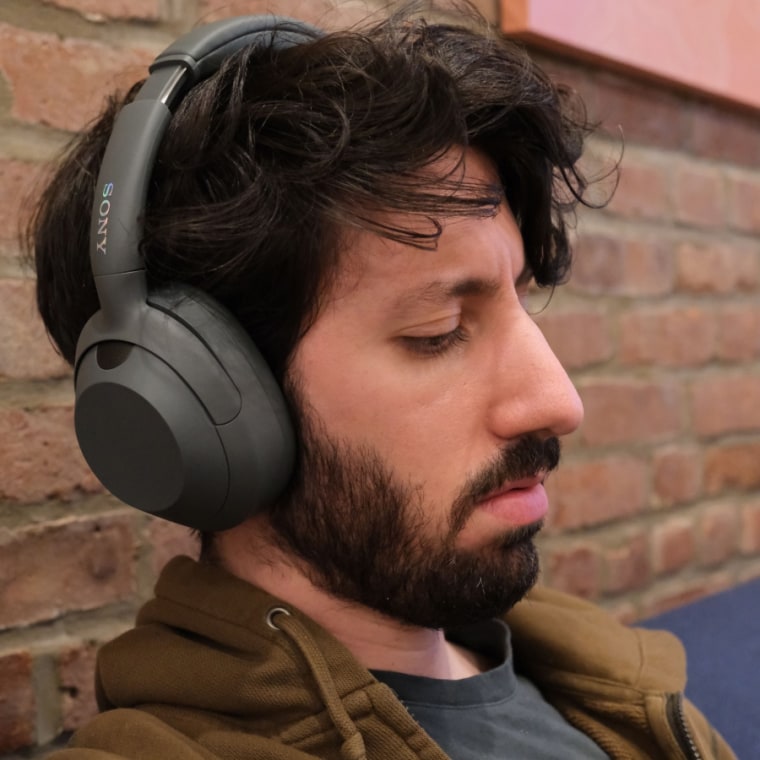
These headphones share much of the design and features of Sony’s flagship models, but at a more affordable price point. The main difference is sound: these headphones pump up the bass.
The Ult Wear looks a lot like Sony’s WH-1000XM4s, with a nondescript, folding design. Like the XM4s, you can tap and swipe the right earcup to control media, adjust volume and more. You have three physical buttons: power, mode switch and Ult. Click the Ult button once for a bit of extra bass, click it twice for a deep bass party-vibe.
Best for travel
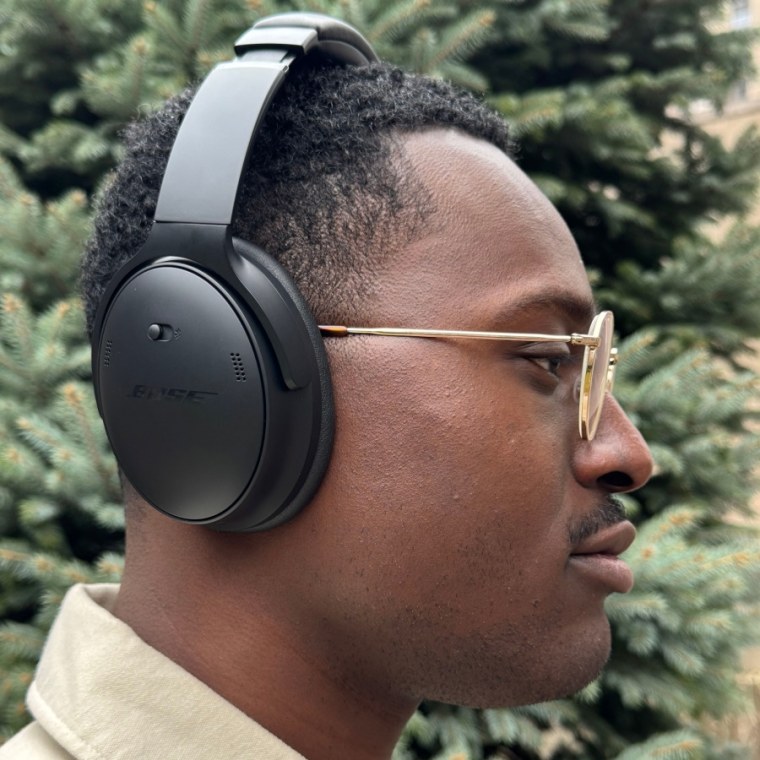
If you’re a frequent flier, you are probably familiar with these Bose QuietComfort headphones. They nail the must-haves for long-distance travel: excellent ANC, a light and compact design, good battery life and a durable carrying case.
On my most recent flight (about 4.5 hours), the headphones’ relatively neutral sound profile made for easy listening — I never felt the need to take the headphones off for a break.
It is easy to control using the physical buttons and on-off switch on the earcup. The Bose QuietComfort Ultra headphones have a slightly more plush and premium build, but cost significantly more than these.
Something to note: you cannot turn ANC off with these headphones, you can mix ANC with transparency, but cannot turn both off to extend the battery life.
How to use over-ear headphones
Over-ear headphones create an enclosed space around your ear that naturally isolates you from outside noise. They are larger than earbuds and on-ear headphones. This extra size generally allows for the biggest and best audio quality, microphones, ANC and controls, in my experience. As with all headphones, there are a few things you should keep in mind to get the most out of them:
Use the different noise cancellation modes
All of our recommended headphones have some form of active noise cancellation and hear-through technology.
Active noise cancellation (ANC) detects incoming noise and generates signals internally to cancel out that noise. Good ANC allows you to clearly hear your music even when there is a lot of background noise, without having to turn your volume to uncomfortably high levels.
Hear-through, passthrough or transparency modes do the opposite: they detect incoming noise and amplify it. This allows you to better hear what is going on around you, despite the natural noise isolation over-ear headphones create.
With most headphones, you can turn both of these modes off, and simply listen to audio without any outside noise dampening or amplification.
I switch between ANC and hear-through often during work, and typically turn both off when I am relaxing at home. Experiment with all the modes available on your headset, and learn what works best for you.
Download the headphone’s app
Most of the headphones on our list have a companion app you can download on your smartphone. These apps typically let you change the audio balance (equalizer) on your headphones, manage which device you are connected to and download software updates to improve your headphones. For many brands, you can also turn on an immersive listening mode though these are universally disliked by the NBC Select team. I list the name of each headphone’s app in the specs line.
Take breaks
Some over-ear headphones can have a squeezing effect on your head over time. If you suffer from tension headaches, earbuds may be a better option, says Allen Conrad, a chiropractor at Montgomery County Chiropractic Center. Wearing over-ear headphones for six to eight hours while sitting at your computer can also have an accumulative effect on neck pain and posture, says Conrad. Consider how heavy your headphones are or swap to earbuds for long work days.
Meet our experts
At NBC Select, we work with experts who have specialized knowledge and authority based on relevant training and/or experience. We also take steps to ensure all expert advice and recommendations are made independently and without undisclosed financial conflicts of interest.
- Dr. Allen Conrad is a chiropractor and owner of Montgomery County Chiropractic Center in North Wales, Pennsylvania.
Why trust NBC Select?
I am a reporter at NBC Select who covers technology and fitness including recent stories on smartwatches, running shoes and more. For this piece, I tried over a dozen over-ear headphones while working, commuting and relaxing indoors. I also spoke with other NBC Select staffers about their experiences with over-ear headphones they use.
Catch up on NBC Select’s in-depth coverage of tech and tools, wellness and more, and follow us on Facebook, Instagram, Twitter and TikTok to stay up to date.

